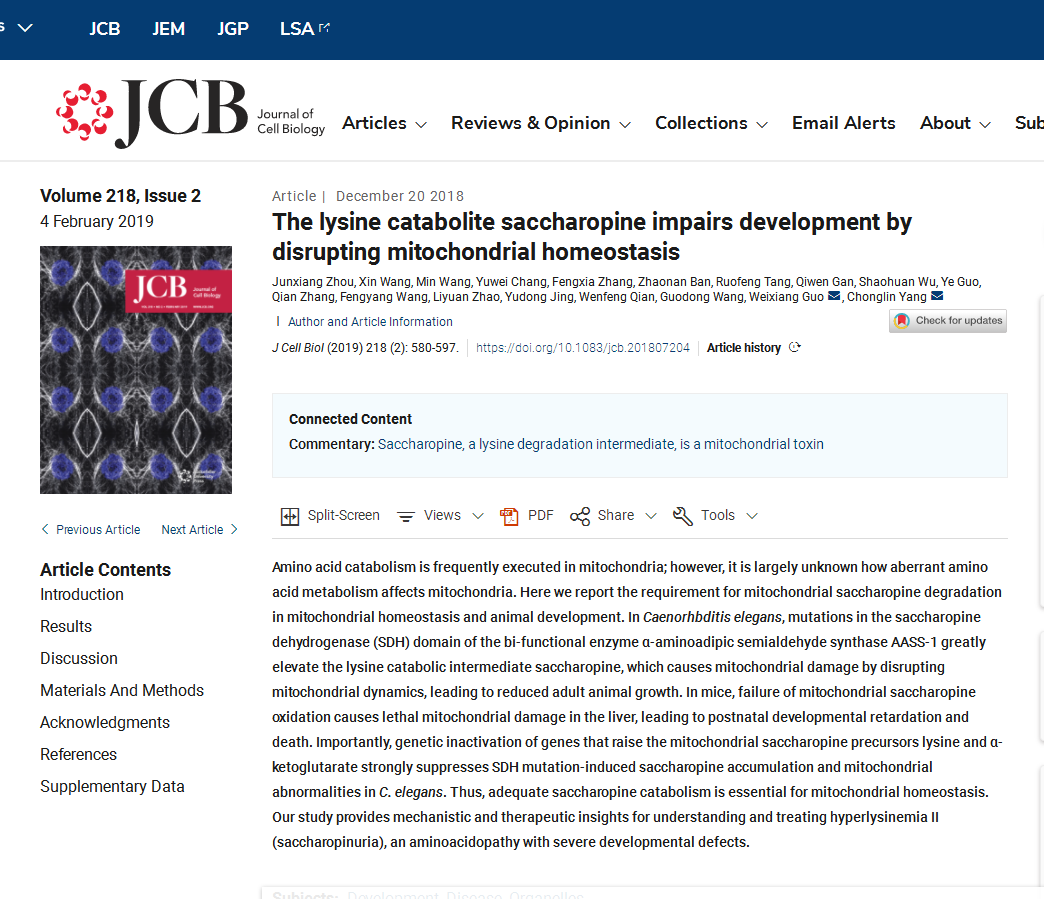J Cell Biol. 20 december,2018|Supp Info:https://doi.org/10.1083/jcb.201807204
The lysine catabolite saccharopine impairs development by disrupting mitochondrial homeostasis
Junxiang Zhou1,2,3, Xin Wang2 , Min Wang1, Yuwei Chang4, Fengxia Zhang4, Zhaonan Ban3,4, Ruofeng Tang1,3, Qiwen Gan1,3, Shaohuan Wu3,4,5, Ye Guo1, Qian Zhang1,3, Fengyang Wang1,3, Liyuan Zhao1,3, Yudong Jing1 , Wenfeng Qian4,5, Guodong Wang4, Weixiang Guo1 , and Chonglin Yang1,2
Abstract
Amino acid catabolism is frequently executed in mitochondria; however, it is largely unknown how aberrant amino acid metabolism affects mitochondria. Here we report the requirement for mitochondrial saccharopine degradation in mitochondrial homeostasis and animal development. In Caenorhbditis elegans, mutations in the saccharopine dehydrogenase (SDH) domain of the bi-functional enzyme α-aminoadipic semialdehyde synthase AASS-1 greatly elevate the lysine catabolic intermediate saccharopine, which causes mitochondrial damage by disrupting mitochondrial dynamics, leading to reduced adult animal growth. In mice, failure of mitochondrial saccharopine oxidation causes lethal mitochondrial damage in the liver, leading to postnatal developmental retardation and death. Importantly, genetic inactivation of genes that raise the mitochondrial saccharopine precursors lysine and α-ketoglutarate strongly suppresses SDH mutation-induced saccharopine accumulation and mitochondrial abnormalities in C. elegans. Thus, adequate saccharopine catabolism is essential for mitochondrial homeostasis. Our study provides mechanistic and therapeutic insights for understanding and treating hyperlysinemia II (saccharopinuria), an aminoacidopathy with severe developmental defects.



